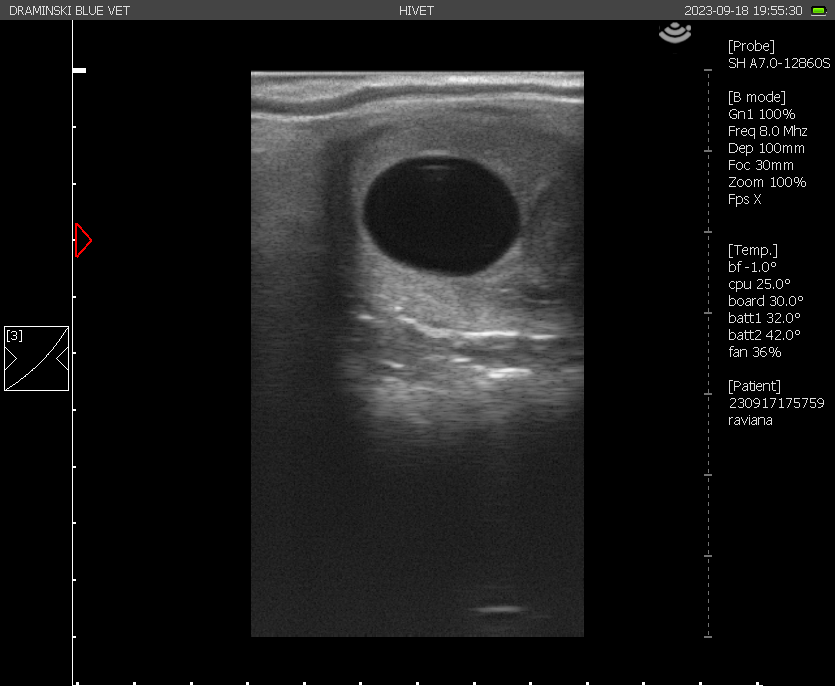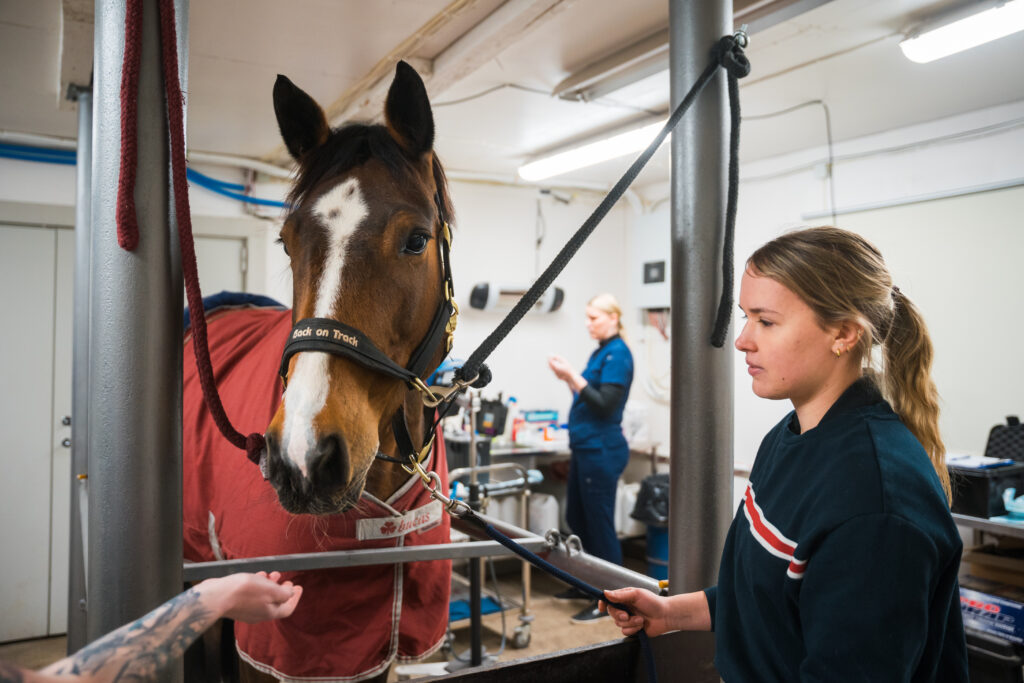Embryo Flush & Transfer
Embryo Flush is the technique of removing (flushing) an embryo from one mare – the biological dam – and placing it in the uterus of a recipient mare. The donor mare is inseminated with fresh, chilled, or frozen semen.
The embryo is then flushed from her uterus on day 7 or 8 after ovulation and transferred non-surgically into a recipient mare whose reproductive cycle has been synchronized with that of the donor. Alternatively, the embryo can be frozen for future use. The recipient mare carries and delivers the foal and nurses it until weaning. This allows the biological dam to continue working and potentially breed more than one foal per season. It is a routine gynaecological procedure for competition mares that are unable or unsuitable to carry their own pregnancy.


WHAT RESULTS CAN BE EXPECTED?
When using healthy donor and recipient mares and inseminating with cooled shipped semen, there is a 70% chance of recovering an embryo from the donor and a 60–70% chance of achieving pregnancy in the recipient. This results in just over a 50% chance of successfully retrieving an embryo per attempt per cycle that leads to pregnancy.
REQUIREMENTS
Semen selection
Fresh or cooled semen typically yields the highest embryo retrieval rates, making a stallion whose semen can be shipped cooled the preferred choice. If a stallion of interest is only available for frozen semen, then the most critical factors are the stallion’s fertility and semen quality — higher-quality semen increases the success rate of the embryo flush
Recipient mare selection
A minimum of two potential recipient mares should be provided by the donor mare’s owner for synchronization. If suitable recipient mares are unavailable, the embryo can be flushed from the donor mare on Day 6 post-ovulation and stored frozen for transfer at a later date.
Recipient mares should be in excellent reproductive and general health, no older than 15 years, within a 150 kg weight range of the donor mare, of good temperament, and have a normal udder.
Donor mare selection
Although your mare doesn’t have to carry the foal to term, several factors should be considered when determining the likelihood of successful embryo retrieval. Oocyte quality declines as mares age, leading to reduced embryo survival rates. A mare’s fertility begins to decrease significantly at around 12 years of age, and embryos are noticeably smaller at the time of flushing in mares 18 years and older. Mares under 10 years of age exhibit the highest retrieval rates.
Heat, stress, and exercise can all negatively affect the embryo retrieval process. Temperatures above 30°C can reduce embryo retrieval rates by as much as 50%. Stress elevates circulating cortisol levels, which can disrupt the hormones necessary for a mare to develop a dominant follicle and ovulate. Numerous factors, including exercise and transportation, can influence this process. Management from the time the mare comes into season until the embryo flush is critical. Stress and heavy exercise should be minimized.

How can we help?
Contact usYou are welcome to arrange a time to come and see us.
